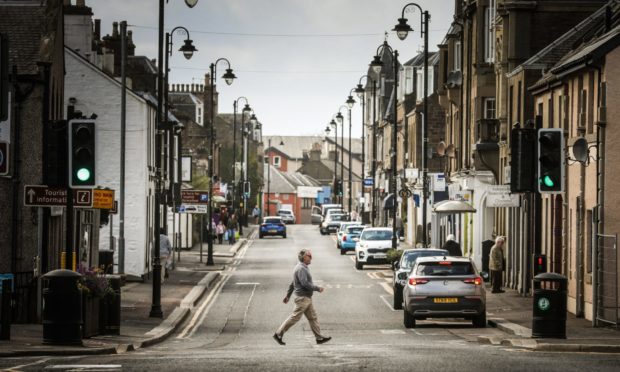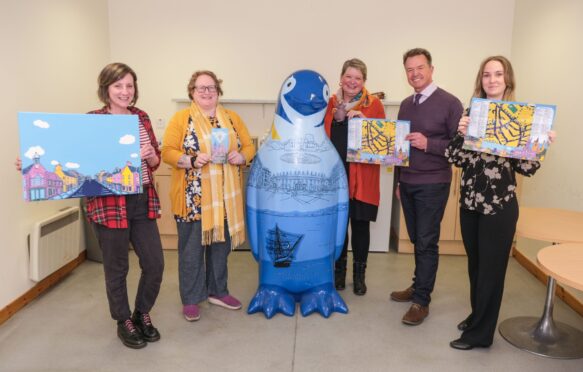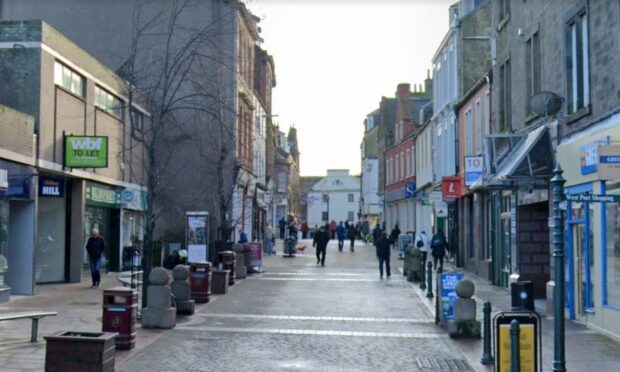Coronavirus restrictions are being eased in Angus from Friday, relaxing strict rules on hospitality and travel in the region.
However Dundee, Fife, and Perth and Kinross will remain under level three Covid-19 restrictions for another week, Nicola Sturgeon has confirmed.
Speaking in the Scottish Parliament, the First Minister announced a number of changes to the tiered system being used to combat the spread of coronavirus across Scotland.
The whole of Tayside and Fife has been under level three restrictions since November, with limits on travel into and out of the areas and strict rules in place on hospitality.
Confirming that Angus would be moved from level three restrictions, Ms Sturgeon said: “I am pleased to say that there are three areas that will move down to level two on Friday.
“These are Inverclyde, Falkirk and Angus.
“All three have recorded and now have relatively low rates of transmission although Falkirk’s have increased very slightly in recent days but it has not changed our judgement that all three meet the criteria for moving into level two.”
Edinburgh, Clackmannanshire, Midlothian, Inverclyde and North Ayrshire will remain, with the rest of Tayside and Fife, under level three rules.
Ms Sturgeon said the Scottish Government decided against moving the Scottish capital to level two due to concerns regarding the Christmas season.
Aberdeen and Aberdeenshire will stay under level two rules despite continuing concerns about the infection rate. Ms Sturgeon said the Scottish Government is “continuing to monitor” the situation in both areas.
Argyll and Bute and East Lothian will also remain in level two.
Dumfries and Galloway and the Borders are being moved from level two to one.
Coronavirus in Scotland – track the spread in these charts and maps
Moray, the Highlands, the Western Isles and the Northern Isles will remain at level one.
Eleven Scottish local authority areas which have been under tier four measures since November 17 will be lifted out of this toughest level on Friday at 6pm. However, closed shops in the areas can reopen from 6am on the day.
Glasgow, Renfrewshire, East Renfrewshire, East Dunbartonshire, West Dunbartonshire, North Lanarkshire, South Lanarkshire, East Ayrshire, South Ayrshire, Stirling and West Lothian council areas will be placed in level three.
Ms Sturgeon said the prevalence of infections in these 11 areas have “fallen significantly”.
She added hospital and intensive care numbers have also dropped across the country in recent weeks.
It comes as Scotland recorded a further 692 Covid-19 cases and 33 deaths linked to the virus in the past day
Schools staying open is ‘priority’ as Nicola Sturgeon dismisses closure calls in tier four areas
Covid tiers: Parts of Scotland at level four as nation nears 5,000 deaths
What’s the difference between levels three and two?
The tier three rules mean non-essential travel is not permitted, with alcohol unable to be served from licensed premises.
Up to six people from two different households can meet at pubs, bars, restaurants and cafes – which are able to sell food and non-alcoholic drinks inside or outside.
Leisure and entertainment businesses such as cinemas are closed; however shops, gyms, hotels and visitor attractions remain open.
Under level two rules, up to six people from two different households can meet for food and drinks, including alcohol, in hospitality settings under certain restrictions.
Booze can be served indoors with meals until 8pm at pubs, bars, restaurants and cafes. Alcohol can be ordered outdoors at these businesses until 10.30pm.
Travel is not permitted into level three or four areas.
Sites such as museums, galleries, heritage attractions, zoos and aquariums can open, as can the likes of cinemas and bingo halls.
Some indoors sporting activities can also resume.
New tiers system begins: The changes affecting bars, hotels and restaurants
Ms Sturgeon revealed Scotland’s new alert level system for tackling the pandemic on October 27.










